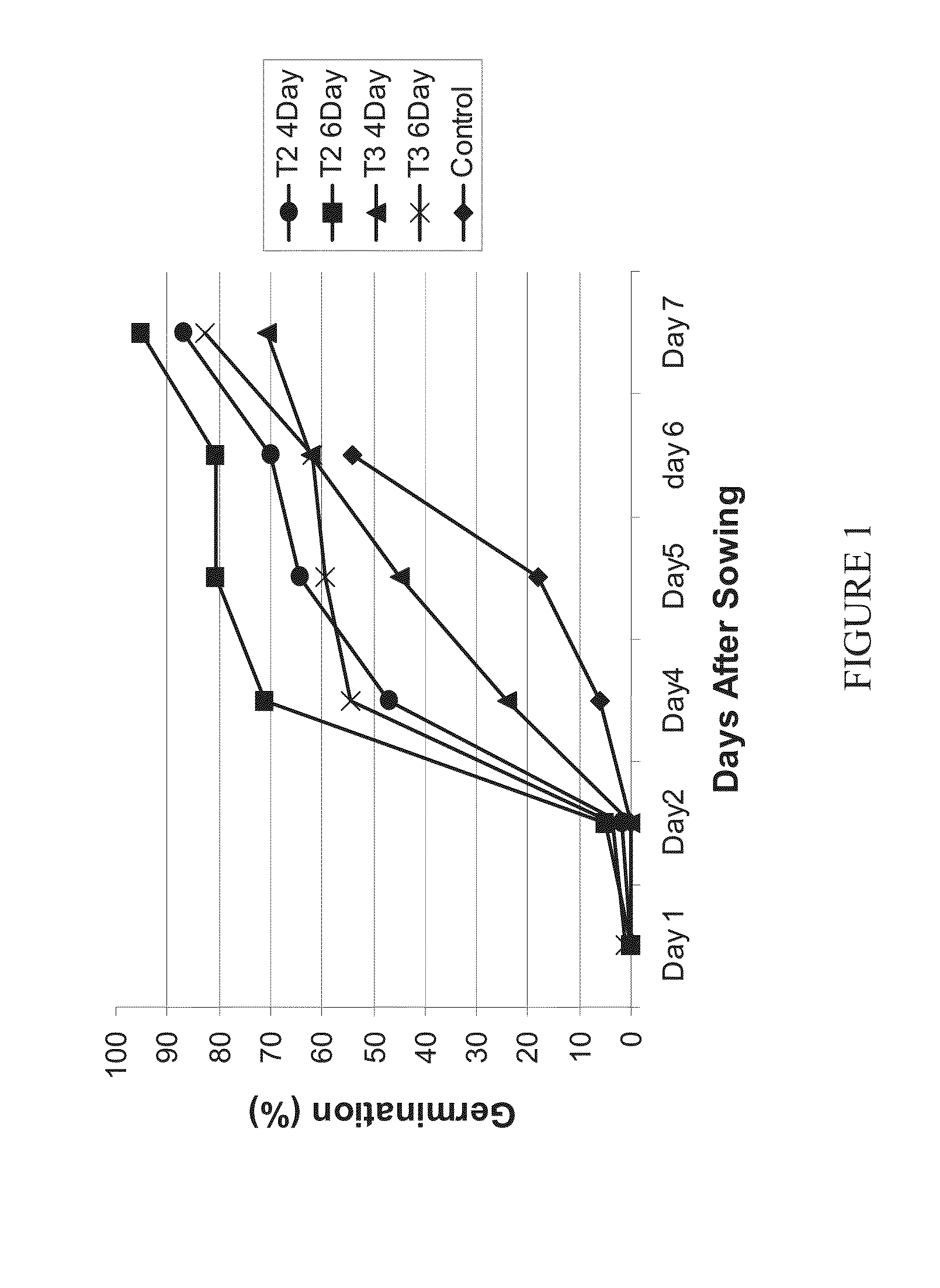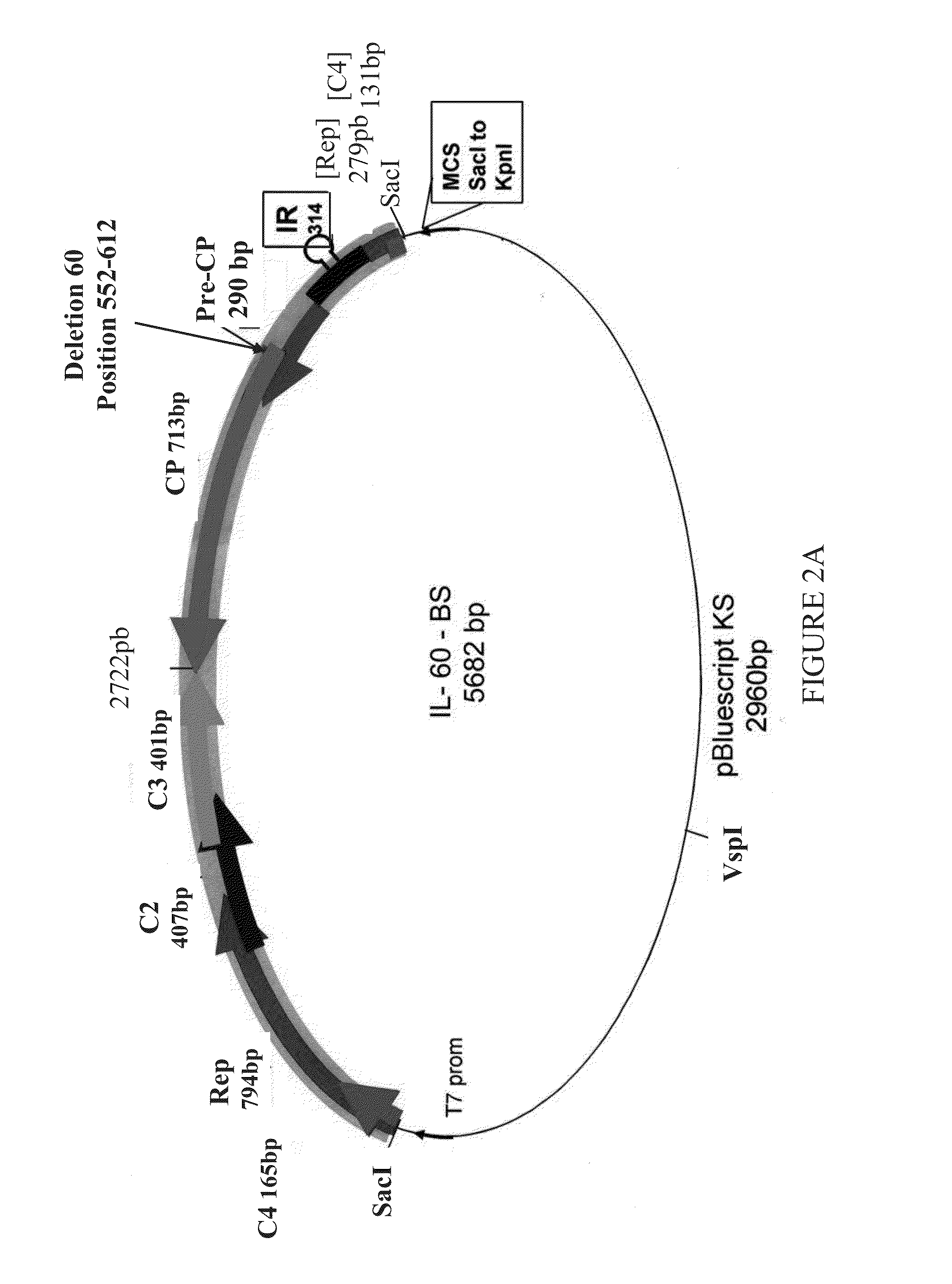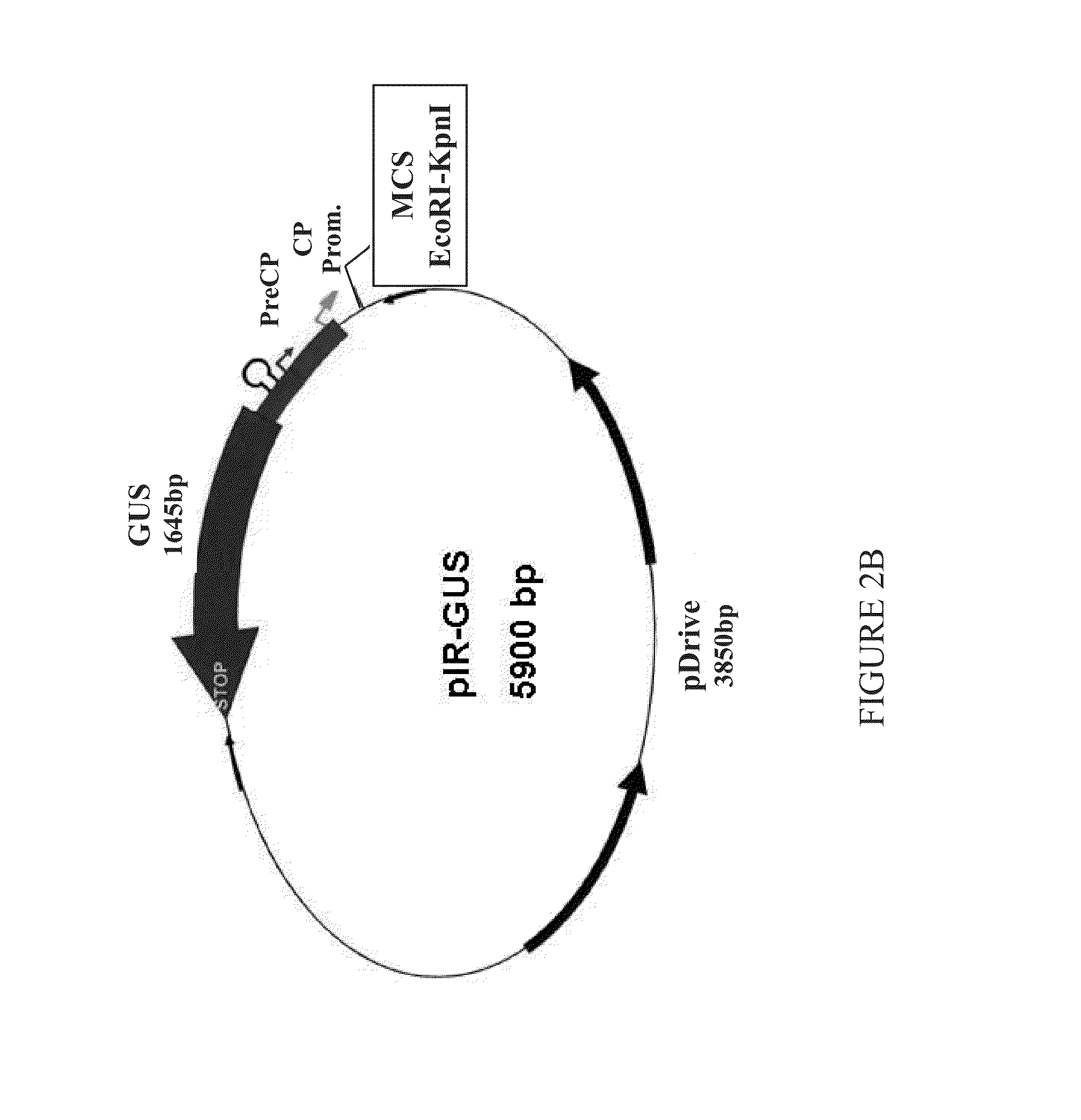Introducing DNA into plant cells
a plant cell and dna technology, applied in the field of plant molecular biology, can solve the problems of difficult and time-consuming transformation of some agriculturally important crop plants, poor efficiency of transformation, and serious genotype limitations, and achieve the effect of simple and efficient delivery of heterologous dna and easy growth
- Summary
- Abstract
- Description
- Claims
- Application Information
AI Technical Summary
Benefits of technology
Problems solved by technology
Method used
Image
Examples
example 1
Priming Using a Priming Medium Without Foreign DNA
[0111]Tomato seed priming in the presence of polyethylene glycol (PEG) was carried out as previously described (Khan, A A. 1992. In: Horticultural Reviews, Vol. 14, ed. J. Janick. New York: John Wiley, pp. 131-181; Taylor G. et al. 1998. Seed Science Technology 8:245-256), with some modifications.
[0112]Batches of 50 tomato seeds were imbibed in a solution composed of 0.1M Ca(NO3)2; 0.1M MES (4-morpholineetahnsulfonic acid); 15 mM MgCl2 and 25% (solution T2) or 20% (solution T3) of PEG 8000. The osmotic pressure of solutions T2 and T3 was −1.25 mPa and −1.2 mPa respectively. Untreated dry seeds of the same cultivar, same seed lot were used as control. Treatment was carried out under constant temperature of 20° C. with a 12 hour light regimen daily, and stirred gently for 4 or 6 days to obtain proper aeration. Seeds were then placed on 3M filter paper supplemented with 3 ml sterile water and germination rates were recorded daily. The d...
example 2
Introducing IL-60 Constructs into Seeds by Using Priming Medium
[0113]Tomato seeds were primed with a priming solution containing 25% PEG and germinated as described in Example 1 above in the presence of 20, 40 and 60 μg of each of the IL-60-BS (SEQ ID NO:2) and pIR-GUS (SEQ ID NO:8) DNA constructs. The constructs are illustrated in FIGS. 2A and 2B, respectively. Constructs are also described in US Patent Application No. 20100071088, incorporated herein by reference. Untreated dry seeds and seeds primed at the same conditions but without the DNA construct served as control.
[0114]Six days after germination the seedlings were transplanted into pots containing 10 liters soil and placed in a greenhouse at 25° C. Twenty one days after planting, DNA was extracted from true leaves (the third true leaf or above) and subjected to PCR with the following primers for GUS assay:
[0115]Forward primer: ATTGATCAGCGTTGGTGGGA (SEQ ID NO:6) and reverse primer: TGCGGTCGCGAGTGAAGATC (SEQ ID NO:7) designed...
example 3
Expression of the Foreign Genes
[0116]The DNA constructs of the IL-60 family as detailed in Example 2 above (IL-60-BS in combination with pIR-GUS) facilitated the expression of the foreign gus gene present within the pIR-GUS DNA construct and introduced via priming.
[0117]Tomato leaves from the plant obtained as described in Example 2 above were stained for beta-glucuronidase (GUS) according to Jefferson R A. et al. (1987. EMBO J 6: 3901-3907).
[0118]Blue color staining of the leaf tissue clearly denotes the expression of the GUS protein (FIG. 4A-B).
PUM
 Login to View More
Login to View More Abstract
Description
Claims
Application Information
 Login to View More
Login to View More - R&D
- Intellectual Property
- Life Sciences
- Materials
- Tech Scout
- Unparalleled Data Quality
- Higher Quality Content
- 60% Fewer Hallucinations
Browse by: Latest US Patents, China's latest patents, Technical Efficacy Thesaurus, Application Domain, Technology Topic, Popular Technical Reports.
© 2025 PatSnap. All rights reserved.Legal|Privacy policy|Modern Slavery Act Transparency Statement|Sitemap|About US| Contact US: help@patsnap.com



